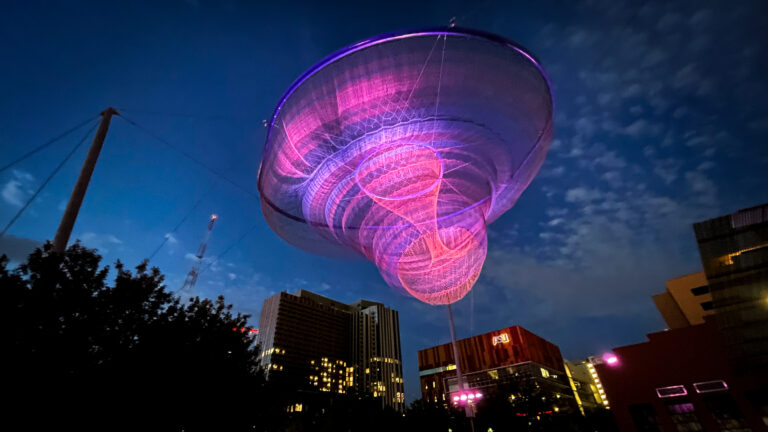A mural on the side of a new apartment building, a light installation that illuminates a walkway at night, and statues that flank park entrances. While all of these works of public art make a community more beautiful, they also spur economic activity in a way that the average person may not consider.
So today, let’s talk about the value of free public art, because at a time when all kinds of art program funding is being cut, it is necessary for business journalists to understand the layout of their local art scene, which includes public art.
Cities budget for public art
Philadelphia is nicknamed the “Mural Capital of the World,” with over 4,000 murals scattered throughout the city. The city has paid for the creation and maintenance of those murals through a city ordinance that requires new construction or renovation projects to include up to 1% of the total budget for public art. They aren’t the only city to require a budget line for public art.
Often called the “percent for art,” similar ordinances have been enacted all over the United States. Although the exact requirements vary by city, these programs often focus on large development projects and may require a developer to set aside a certain percentage, usually 0.5-2%, of the total project budget to acquire or commission works of art for the site. Other provisions may include such things as requiring community input or a residency requirement to favor local artists.
In 1985, the city council of Austin, Texas, made a commitment to set aside 2% of eligible capital improvement project budgets to “commission artists or purchase art for City-owned property and facilities.” The Art in Public Places program is run through the city’s Economic Development Department and has 376 completed projects around the city, with many more works of art in the planning and development phases. The city’s most recent open call for artist proposals budgeted almost $1.5 million for six projects.
Public art attracts tourists
As many cities around the world already know, public art can enhance public spaces, encourage dialogue and interaction, support local artists, and, most importantly, attract tourists. To a city, a mural on the side of a building isn’t just to add visual appeal – it is also to add economic activity. Many towns, large and small, have taken the time to put together self-guided tours showcasing their collections, such as the city of Ojai, California, which created four self-guided tours of its public art collection.
The town of Oro Valley in Southern Arizona recently allocated $50,000 to revive its popular guided public art tours free of charge as a way to make the town “a prime destination for art lovers everywhere.”
The true value of public art
Philadelphia’s Director of Community Murals summed up the importance of public art best: “The key is its accessibility. Not everyone feels welcome in a museum, not everyone has the money or even gives themselves permission to explore art formally.” Public art can bring a community together by giving people a sense of ownership, belonging, and representation in their neighborhoods. Studies have shown that public art can help improve a community’s quality of life and that an art installation in a previously overlooked area can make the area more frequented and valued.
Despite this, not everyone sees the benefits of public art, and many politicians are quick to call the expense “unnecessary.” Last year, the city leaders of Houston proposed cutting the public art budget to help reduce its $187 million deficit. Those opposed to the cut pointed out that the public art budget is a small fraction of the overall budget, and that they “can’t allow one particular item to be a scapegoat for fiscal responsibility.”







